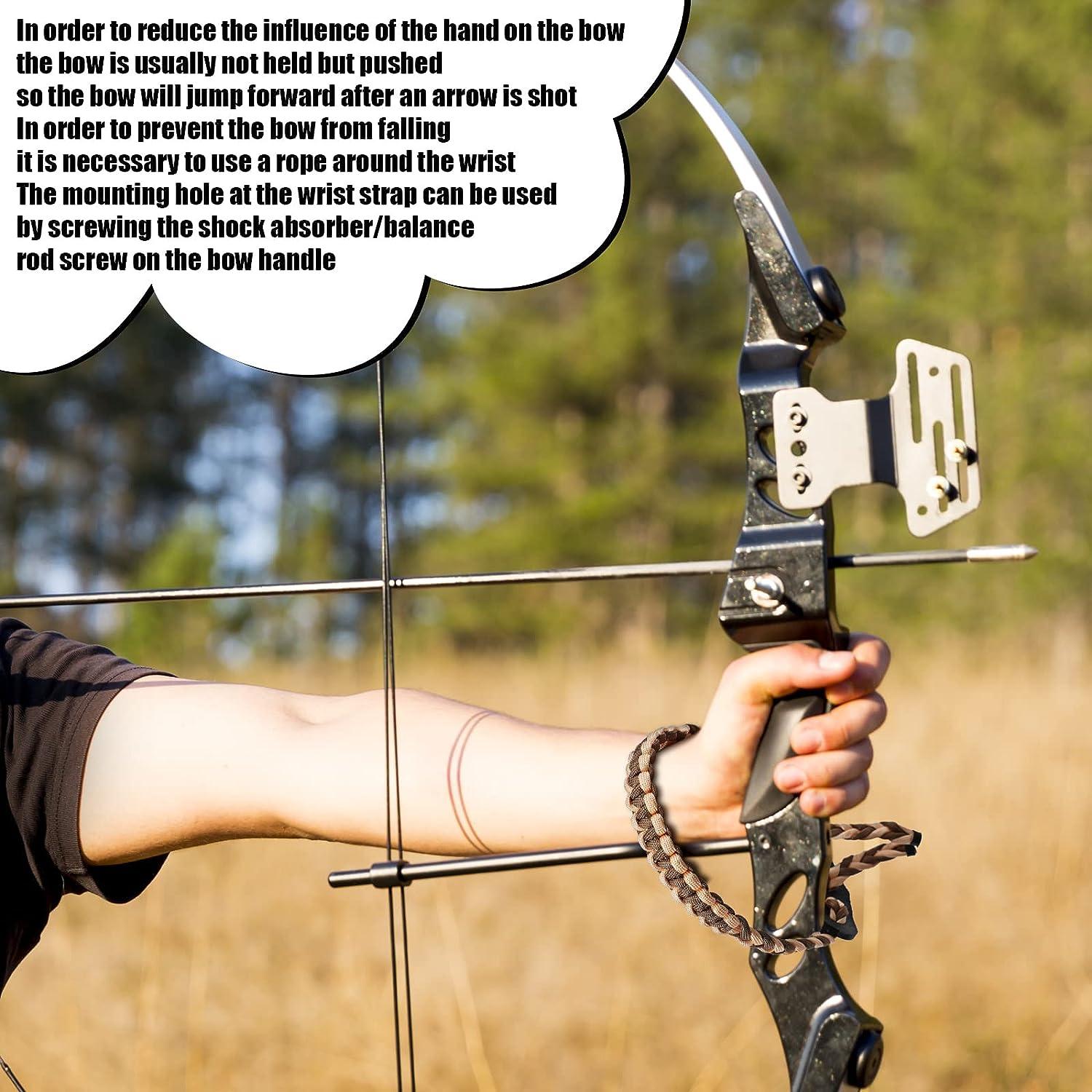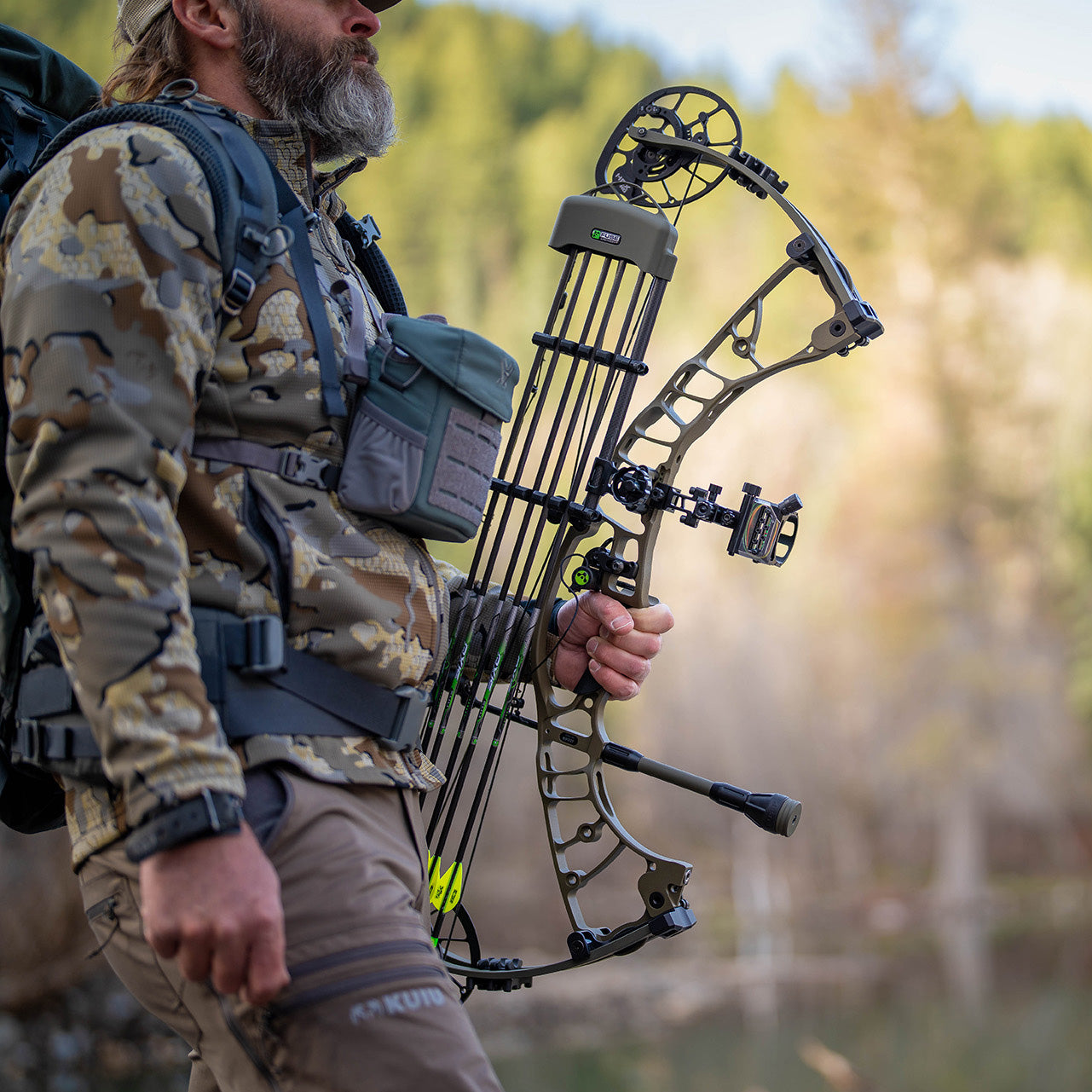Maximizing Your Archery Efficiency With the Right Substance Bow Stabilizer: a Thorough Overview
In the realm of archery, consistency and precision are critical to achieving optimal performance. One critical yet often-overlooked element in boosting precision is the compound bow stabilizer. This plain gadget plays a significant role in steadying your purpose, reducing bow torque, and taking in vibrations. However, the performance of a stabilizer depends upon different aspects, including weight, style, and placement. By recognizing the nuances of choose and enhancing a compound bow stabilizer, archers can adjust their devices to boost their shooting experience to new degrees of efficiency and control.
Significance of Bow Stabilizers in Archery

In addition, bow stabilizers aid in stabilizing the weight circulation of the bow, which can boost the archer's stability while shooting and aiming. By adding weight to the front of the bow, stabilizers can lower the amount of torque experienced upon release, resulting in a smoother and much more regulated shot - compound bow stabilizer. This weight distribution likewise helps in holding the bow consistent for a longer duration, enabling the archer to aim extra accurately
Kinds of Substance Bow Stabilizers
When thinking about the different kinds of compound bow stabilizers offered, it is vital to recognize their distinctive attributes and features to determine the most appropriate alternative for making the most of archery efficiency. The most usual kinds of substance bow stabilizers include sidebar stabilizers, front stabilizers, and back stabilizers. Back stabilizers, also called rear stabilizers, are mounted to the back of the bow and aid in counterbalancing the weight of other devices, resulting in enhanced security and consistent aiming.
Aspects to Consider When Choosing
In evaluating compound bow stabilizers, comprehending the unique features and functions of each kind is essential for making an informed decision on the most suitable option to improve archery performance. When selecting a stabilizer, one have to think about the weight of the stabilizer itself. By meticulously evaluating these aspects, archers can pick a compound bow stabilizer that straightens with their shooting design and maximizes their general performance on the archery range.
Setup and Change Tips
For optimum performance and accuracy in archery, mastering the installment and change of your bow stabilizer is essential. Appropriate setup begins with attaching the stabilizer to the bow's riser, guaranteeing it is find here securely safeguarded.
When readjusting the stabilizer, begin with tiny incremental modifications as opposed to extreme changes. This permits you to assess the effect of each adjustment precisely. Focus on just how the bow reacts to adjustments in stabilizer settings and make modifications accordingly. Keep in mind that the goal is to discover a configuration that decreases hand torque, reduces vibration, and improves precision. Frequently examine the stabilizer's tightness and overall condition to guarantee it proceeds to operate ideally. By mastering the setup and modification process, you can optimize your archery performance and raise your capturing experience.
Upkeep and Treatment Standards

When not in use,It is likewise necessary to store your bow with the stabilizer in a safe and safe place. compound bow stabilizer. Avoid leaving it in extreme temperatures or exposed to guide sunshine for extended durations, as this can trigger damages to the stabilizer. Regularly check the stabilizer's alignment to ensure it is still effectively positioned on your bow. Following these maintenance and care guidelines will help you obtain one of the most out of your bow stabilizer and improve your total archery performance.
Conclusion
Finally, choosing the right compound bow stabilizer is critical for taking full advantage of archery performance. Understanding the significance, types, elements to consider, setup and modification suggestions, as well as maintenance and care guidelines can substantially influence one's accuracy and consistency in shooting. By selecting a stabilizer that matches individual requirements and preferences, archers can improve their general efficiency and attain better results on the variety or in competition.
Bow stabilizers play a crucial duty in boosting an archer's precision and consistency by minimizing resonances and supporting the bow during the release of an arrow - compound bow stabilizer.Furthermore, bow stabilizers help in stabilizing the weight distribution of the bow, which can boost the archer's stability while intending and shooting. The most common kinds of compound bow stabilizers consist of sidebar stabilizers, front stabilizers, and back stabilizers. Back stabilizers, also called rear stabilizers, are installed to the back of the bow and aid in reversing the weight of various other devices, resulting in boosted stability and consistent intending. When choosing a stabilizer, one must consider the weight of the stabilizer itself